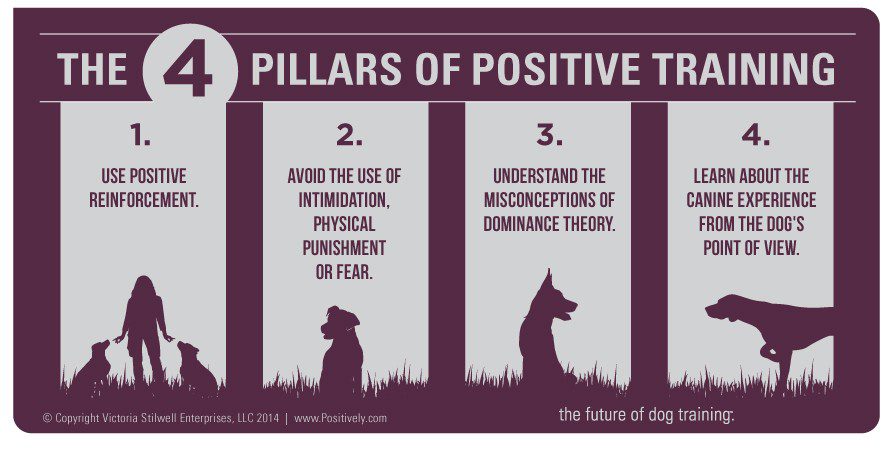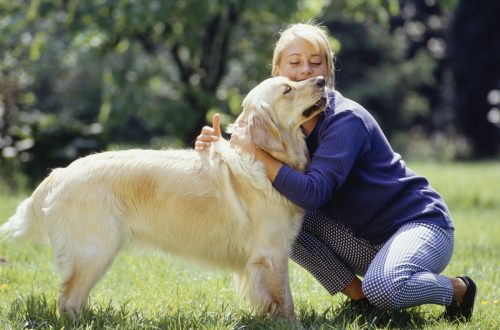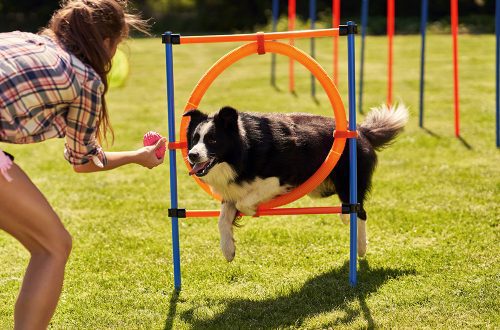
Позитивно појачање у дресури паса
We can talk about positive reinforcement in dog training when the dog receives something important and valuable as a result of doing a “good deed”. For example, a dog lies down on command and we reward him with a treat. In many countries (those that we call civilized), positive reinforcement has long been the main, if not the only acceptable method of training animals, including dogs. Why is this method good?
Фото: гоогле.би
Садржај
What can positive reinforcement be used for?
At one time, E. Thorndike formulated the “Law of Effect”, according to which in the same situation, other things being equal, those reactions that led to a sense of satisfaction are better fixed. Also, the idea of the connection between behavior and consequences was developed by the founder of operant learning B.F. Skinner.
The positive reinforcement method is based on the fact that behavior that is being reinforced becomes more frequent. And its main plus is that the motivation of the dog is satisfied.
And positive reinforcement has no restrictions in the area of use. That is, we can use it to teach a dog (as well as any animal capable of learning in principle) anything and even to correct problematic behavior.
What arguments do opponents of positive reinforcement make, and why are these arguments untenable?
Positive reinforcement has both supporters and opponents. The main arguments against using exclusively positive reinforcement are:
- “Positive reinforcement is bribing a dog.”
- “Positive reinforcement does not form a stable habit.”
- “Positive reinforcement is permissiveness.”
However, none of these arguments is in any way valid.
Speaking of bribery, opponents of positive reinforcement substitute concepts. Bribing is when you show your dog a treat or a toy and call him over. Yes, during training, in order for the dog to understand what is required of him, we, of course, teach him to run up to a tasty piece or toy – but only at the stage of explanation. And if you called the dog without beckoning it, praised it at the moment when it turned away from other dogs or from interesting smells in the grass and ran to you, and when it ran up, play with it or treat it – this is not a bribe, but payment.
So it’s definitely not about bribery.
Those who say, “We tried positive reinforcement, but it doesn’t form a stable habit,” probably грешке у дресури паса. And one of these mistakes is a sharp complication of the task.
For example, if you practiced a command in an apartment, and the next day you asked your dog to do it on a noisy street in a crowd of strangers, cars, and a lot of other irritants, most likely the dog will be too confused to follow it.
Before proceeding to the next step, you need to make sure that the dog understands the task. If the task is gradually complicated, important stages of training are not missed, and the method of motivation is chosen correctly, the dog will show excellent results in positive reinforcement training, and consistently.
In addition, positive reinforcement uses method of “variable reinforcement”when the reward is not given every time, and the dog does not know if he will receive a bonus for completing the command. Variable reinforcement is more effective than giving a prize after each command. Of course, this method is used when the skill is already formed, and the dog understands exactly what you want from him. This also ensures the stability of command execution.
Another argument of opponents of positive reinforcement is “permissiveness”. “The dog will sit on the neck!” they are outraged. But permissiveness is when the owner does not interfere in the behavior of the dog, and she does what she wants (wants – catches cats, wants – gnaws shoes, etc.). However, using positive reinforcement, we train the dog, explain the rules of living together and help to adapt to reasonable restrictions, suggesting how she can satisfy her needs – we just do it humanely. That is, positive reinforcement also has nothing to do with permissiveness.
Које су предности позитивног појачања?
Positive reinforcement has a number of valuable advantages over other methods:
- The dog becomes иницијатива.
- Пас learning to think, draw conclusions and often itself suggests the necessary actions.
- Disappears distress (destructive stress) in the process of training, classes bring pleasure to both the owner and the dog, which means that the contact between them is strengthened.
- A dog with a great desire to work, “takes” responsibility and мотивисан do your part of the job.
What does it take to use positive reinforcement in dog training?
Positive reinforcement can be used with all dogs, so the dog only needs to be healthy enough to be able to learn in general and to master certain skills in particular.
From a person who has decided to use positive reinforcement in dog training, it is required:
- Understanding, what is an encouragement for a particular dog “here and now.”
- Дефиниција exact moment of encouragement. If, when teaching your dog to sit on command, you encourage him to stand up, you will be teaching him to stand up, not sit.
- Стрпљење. Sometimes you need to give your dog a chance to think.
- Секвенца. There must be rules in a dog’s life, and the owner’s behavior must be predictable. If you use positive reinforcement today and use a stranglehold or electric shock tomorrow, the dog will not know what to expect from you – this will undermine your credibility, and you are unlikely to succeed.







